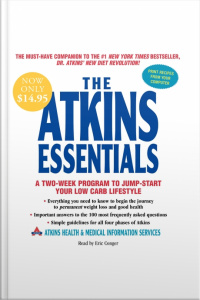Synopsis
Learn Spanish in one-minute sound bytes. A series of short, fun, audio lessons which start from zero, and follow a sequence that will help you build your language, step by step.
Episodes
-
Episode 40: An Irregular Verb - Querer, To Want
15/11/2011 Duration: 01minYo quiero, Tú quieres, Usted/él/ella quiere, Nosotros/nosotras queremos, Vosotros/vosotras queréis, Ustedes/ellos/ellas quieren, Note that some of the conjugations show a vowel change in the stem, from E to EI. This is called a stem-changing verb, and there are many like this. However they do follow a pattern, and are easy to get used to: The ones that change are those of the 1st, 2nd and 3rd persons singular, and the 3rd person plural. The 1st and 2nd persons plural remain untouched, and this is an important pattern to know for future verb conjugations! Look out for our ebook to help you learn - Spanish in a Suitcase - available in the iBookstore or through iTunes. A beginner Spanish method for travel - packed full of audio and ready to go! For iPad, iPhone and iPod touch.
-
Episode 39: Higher numbers
26/10/2011 Duration: 01minTreinta (30), Cuarenta (40), Cincuenta (50), Sesenta (60), Setenta (70), Ochenta (80), Noventa (90), Cien (100), Ciento uno (101), Ciento dos (102), Ciento tres (103), Ciento cuatro (104), Ciento cinco (105), Ciento seis (106), Ciento siete (107), Ciento ocho (108), Ciento nueve (109), Ciento diez (110), Ciento veinte (120), Ciento treinta (130), Ciento cuarenta (140), Ciento cincuenta (150), Ciento sesenta (160), Ciento setenta (170), Ciento ochenta (180), Ciento noventa (190), Doscientos (200)! Note that for numbers over 100 you don't need to use the word "and" between "cien" and the next number, as is done in English. Look out for our ebook - Spanish in a Suitcase. A beginner Spanish method for travel - packed full of audio and ready to go! For iPad, iPhone and iPod touch.
-
Episode 38: Daily routines
29/09/2011 Duration: 01minPrimero, me levanto a las siete de la mañana. Luego, me ducho y me visto. Luego, desayuno un café y una tostada (desayunar = to breakfast). Después, voy al trabajo. Primero, luego y después. Look out for our ebook - Spanish in a Suitcase. A beginner Spanish method for travel - packed full of audio and ready to go! For iPad, iPhone and iPod touch.
-
Episode 37: Reflexive verbs
05/09/2011 Duration: 01minRemember the verb LLAMARSE (me llamo, te llamas, se llama, nos llamamos, os llamáis, se llaman) - it can literally be translated as: I call myself, you call yourself, she calls herself, etc. When a reflexive verb is conjugated, the SE on the end of the infinitive is converted to the corresponding REFLEXIVE PRONOUN. LEVANTARSE: (yo) me levanto, (tú) te levantas, (usted/él/ella) se levanta, (nosotros/as) nos levantamos, (vosotros/as) os levantáis, (ustedes/ellos/ellas) se levantan. It's used for a lot of daily routine verbs, such as DUCHARSE (to have a shower), VESTIRSE (to get dressed), PEINARSE (to comb one's hair), ACOSTARSE (to go to bed).
-
Episode 36: This and That
04/08/2011 Duration: 01minSingulars: Este reloj (this watch), esta llave (this key), ese reloj (that watch), esa llave (that key). Plurals: Estos relojes (these watches), estas llaves (these keys), esos relojes (those watches), esas llaves (those keys). For singular items use: este, esta (this), ese, esa (that). For plural items use: estos, estas (these), esos, esas (these, those).
-
Episode 35: The Alphabet
20/07/2011 Duration: 01mina, be, ce (2 versions), (che, in older dictionaries), de, e, efe, ge, hache, i, jota, ca, ele, (elle, in older dictionaries), eme, ene, eñe, o, pe, cu, erre, ese, te, u, uve, uve doble, equis, i griega, zeta (2 versions).
-
Episode 34: Numbers, from 41 to 50
29/06/2011 Duration: 01minNumbers between 41 - 50: Cuarenta, Cuarenta y uno, Cuarenta y dos, Cuarenta y tres, Cuarenta y cuatro, Cuarenta y cinco, Cuarenta y seis, Cuarenta y siete, Cuarenta y ocho, Cuarenta y nueve, Cincuenta
-
Episode 33: Describing what someone is like
13/06/2011 Duration: 01minTo say what someone is like, we use the verb SER, with the adjective. Don't forget that the adjective must agree with the gender of the person you're talking about. For example: Soy alegre - I'm a happy person, Tú eres listo/a - you're clever, Usted es generoso/a - you are generous, Ella es divertida, él es divertido - she/he is fun, Nosotros/as somos impacientes - impatient, Vosotros/as sois simpáticos/as - nice, Ustedes son amables - kind, Ellos son tímidos/as - shy, Ellas son entusiastas - enthusiastic
-
Episode 32: Speaking about families
25/05/2011 Duration: 01minMi madre, mi padre, mis padres, mi hija, mi hijo, mis hijos, mi tía, mi tío, mis tíos, mi abuela, mi abuelo, mis abuelos
-
Episode 31: Some polite expressions
20/05/2011 Duration: 01minWhen we want to interrupt someone: Perdone, or simply perdón. Please - por favor, Thank you / thank you very much - ¡gracias! / ¡muchas gracias! If you'd like to squeeze past somebody - con permiso. If someone wants to squeeze past you - ¡por supuesto! (of course!)
-
Episode 30: More about Prepositions
22/04/2011 Duration: 01minWhat happens when we combine DE + EL and DE + A. Do you remember the prepositions DE and A? Sí, lejos DE la ciudad. Listen to what happens if CIUDAD is replaced by a masculine word: Lejos DEL centro, lejos DEL museo. What would have been DE EL has become DEL! Al lado DEL parque, enfrente DEL cine. Now, the same happens with A and EL. AL. Voy AL hospital. Está AL lado DEL río. There were two in that one: AL and DEL. More please! Al lado del bar, al lado del supermercado.
-
Episode 29: Three useful prepositions
05/04/2011 Duration: 01minLearn about three important prepositions - EN, DE and A. Let's have a look at some of those little words that sit in between. Some are called prepositions. Here are three: EN - IN (en la ciudad, en el campo, en mi bolsillo). DE - OF or FROM, (lejos DE la Universidad (Far from the University), soy de Argentina (I'm from Argentina)). A - TO or AT (a la derecha, (at right / to the right), a la izquierda, (at left / to the left))
-
Episode 28: Where something is located
31/03/2011 Duration: 01minToday we're going to look at ways of saying where something is located. We learnt in Episode 27 to ask or say IF there was something, using the word HAY. To say WHERE it is, we use the verb ESTAR. ¿Por favor, dónde está la estación? If it was very close-by, the answer would be: ¡Está muy cerca! That's for one place or object. For more than one thing: ¿Dónde están los pasaportes? - Están en el hotel. ¿Dónde estás tú? - estoy en Melbourne, Australia
-
Episode 27: There is and there are
23/03/2011 Duration: 01minWays of saying there is and there are. In Spanish we have a neat little word that means THERE IS, or THERE ARE, are you ready? HAY. It's that simple. There is a restaurant next door: Hay un restaurante al lado. Or, there are many taxis around here: hay muchos taxis por aquí. Great, isn't it! You see it's good for singular and plural. And questions too! ¿Hay un teléfono? - sí, ¡hay! … Don't forget plural questions: ¿Hay unos restaurantes? - Sí, ¡hay muchos!
-
Episode 26: Ways of saying 'you'
09/03/2011 Duration: 01minWays of saying 'you': You may have noticed that there are several ways to say YOU in Spanish. Let's go over them to make sure. To talk about a SINGLE YOU in a FAMILIAR way, we use: Tú, o VOS en Argentina, Uruguay, Paraguay and parts of Central America. RESPECTFUL YOU: usted. In Spain two forms for PLURAL YOU are used in a FAMILIAR way: Vosotros (boys and mixed), and vosotras (girls). The second form is used in Spain in RESPECTFUL situations: Ustedes. In Hispanic America PLURAL YOU, both FAMILIAR and RESPECTFUL: Ustedes
-
Episode 25: In the city
02/03/2011 Duration: 01minWords used in the city: City - la ciudad, Street - la calle, Shops - las tiendas, Metro or underground, - el metro, el subterraneo, o el subte en Argentina, Car - el coche, el carro, el auto, Bank - el banco, Supermarket - el supermercado, Park - el parque, Hotel - el hotel, Station - la estación, So many people!, ¡Hay tanta gente!
-
Episode 24: IR verbs
23/02/2011 Duration: 01minToday we're going to look at IR verbs: I live - yo vivo, You live - tú vives, Respectful you/he/she lives - usted/él/ella vive, We live - nosotros/nosotras vivimos, You (all) live - vosotros/vosotras vivís, Respectful you all/they live: ustedes/ellos/ellas viven
-
Episode 23: Plurals
09/02/2011 Duration: 01minPLURALS. To form a plural in Spanish, we add an S. One street is: una calle, Two streets are: dos calles. Here are some more: bicycle/bicycles - bicicleta/bicicletas, car/cars - carro/carros. If a word ends in a consonant, we add ES, for example: tren/trenes, bar/bares. Some words are always plural: trousers, scissors - pantalones, tijeras
-
Episode 22: THE, A, AN, SOME
01/02/2011 Duration: 01minTHE, A, AN, SOME. To say THE (for singular or plural nouns), we can choose from: el, la, los, las. All of these mean THE: EL banco, LA farmacia, LOS bancos, LAS farmacias. So what about the word A or AN? - UN o UNA. UN banco, UNA farmacia. What about the word SOME? As SOME is the plural of A, we would use UNOS or UNAS. Unos cafés, unas tiendas
-
Episode 21: Personal Pronouns
27/01/2011 Duration: 01minLet's look at personal pronouns: I - yo, You (one person) - tú, He - él, She - ella, You (formal) - usted, We, for boys or mixed company - nosotros, We, for girls - nosotras, You (all), for boys and mixed company - vosotros, You (all), for girls - vosotras (vosotros and vosotras are used only in Spain), They, for boys and mixed company - ellos, They, for girls - ellas, You (all), in Hispanic America - ustedes (in Spain, ustedes is used for formal situations)














